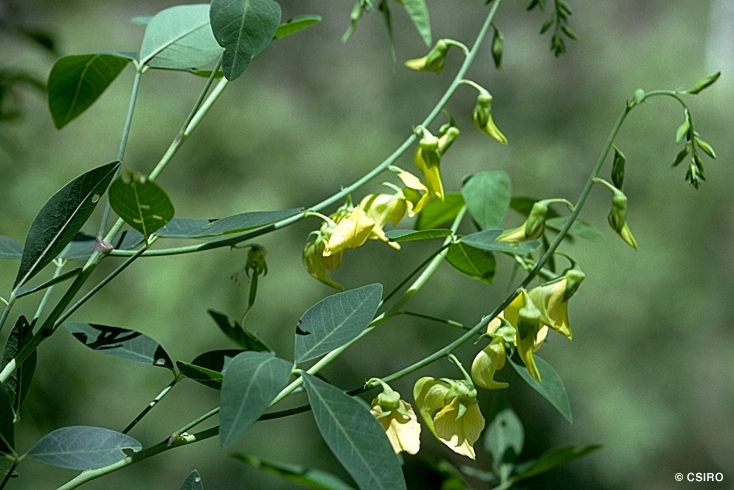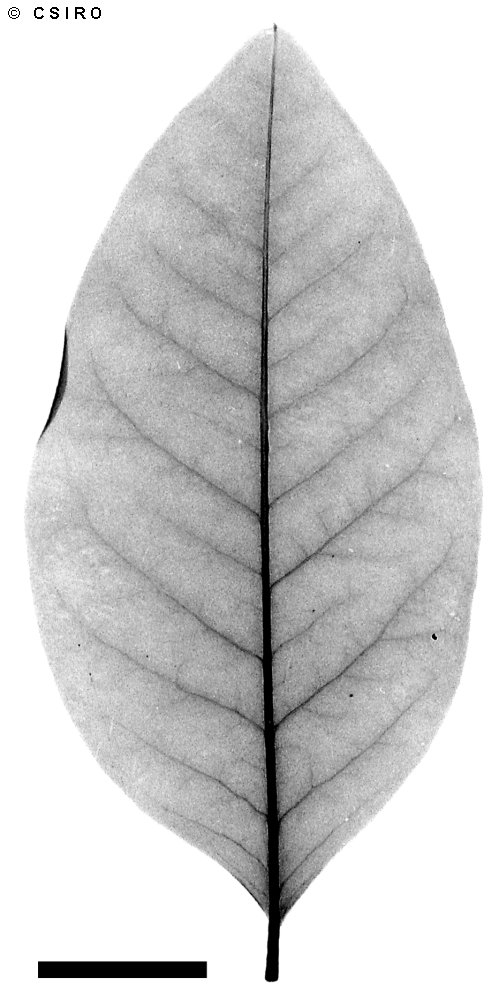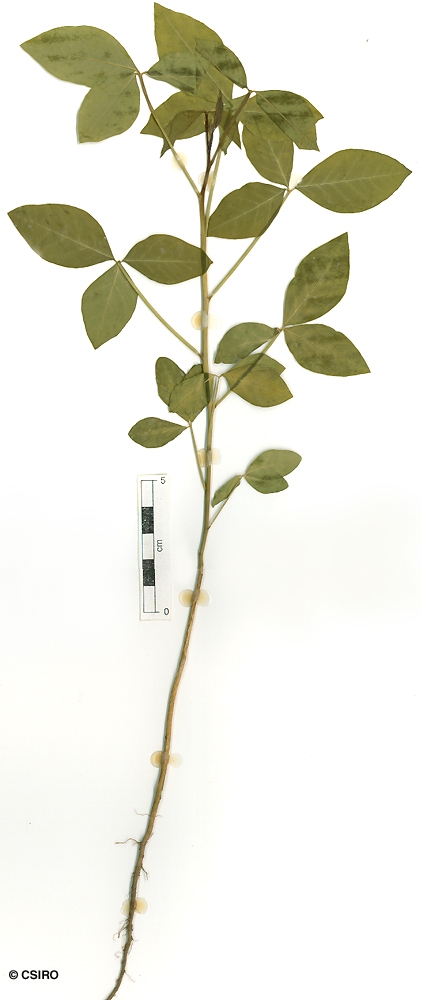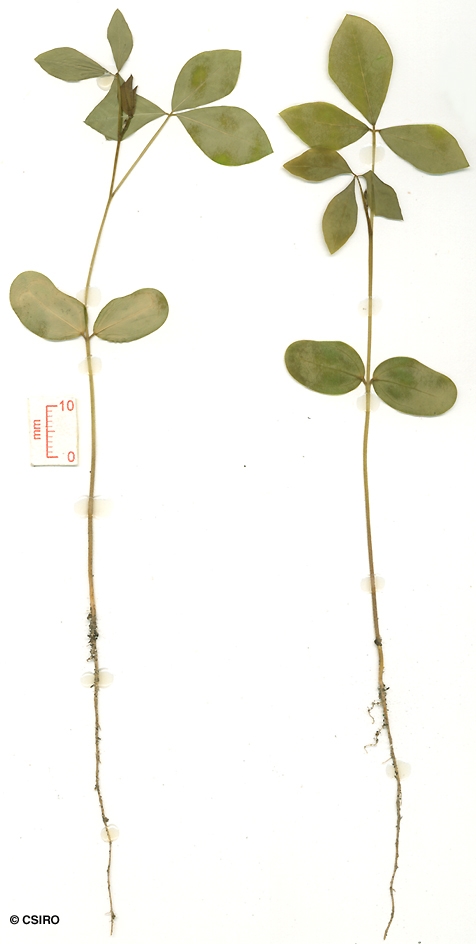Australian Tropical Rainforest Plants - Online edition
Crotalaria laburnifolia L.




Linnaeus, C. von (1753) Species Plantarum 2: 715. Type: Habitat in Asia.
Bird Flower; Rattlepod
Flowers and fruits as a shrub about 1-2 m tall.
Inflorescences about 3-33 cm long. Flowers borne singly in the axils of persistent narrow, about 4 mm long, bracts. Calyx about 12-17 mm long, the lobes longer than the tube. Petals: standard yellow, often marked with red-brown lines; wings about 10-20 mm long; keel about 20-30 mm long. Stamens 10, dimorphic, five with dorsifixed anthers and five with basifixed anthers. Pollen orange. Staminal filaments fused to form a tube which is open on one side. Ovary stalked, ovules about 20-22. Style hairy towards the apex, stigma hairy.
Fruits cylindrical, stalked, about 30-45 x 8-10 mm, calyx persistent at the base. Seeds, about 10-20 seeds per pod, rattle when the pod is shaken. Seeds about 3-7 x 2-4 mm, reniform. Radicle about 4-5 mm long, straight or slightly curved, running along the edge of the cotyledons.
Cotyledons about 17-22 x 11-15 mm, petiole short, about 1 mm long. First pair of leaves trifoliolate. At the tenth leaf stage: leaflet blades elliptic to ovate, about 35-40 x 20-25 mm, leaflet stalks short, about 1-2 mm long. Lateral veins about 7 or 8 pairs, forming loops inside the blade margins. Seed germination time 5 to 7 days.
An introduced species originally from eastern Africa and SE Asia, now naturalised in WA, CYP, NEQ, CEQ and southwards as far as south-eastern Queensland. Altitudinal range from near sea level to 400 m. Often grows in open forest but also found in vine thickets and monsoon forest.
This species has been suspected of causing walkabout disease in horses but it is now believed that this species is not toxic to stock; not toxic to rats in laboratory tests. Hacker (1990).





